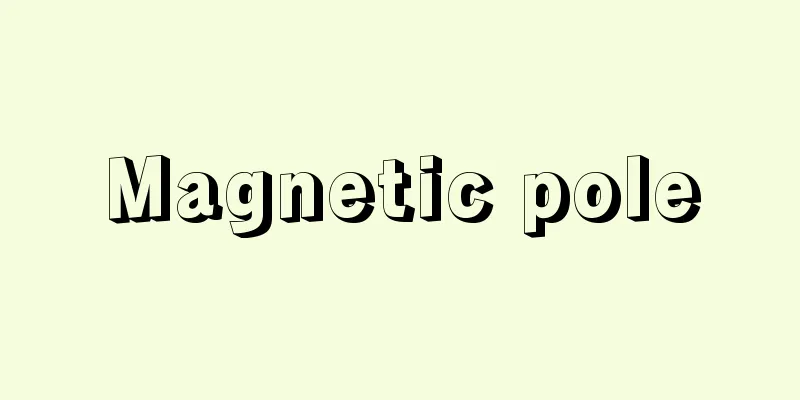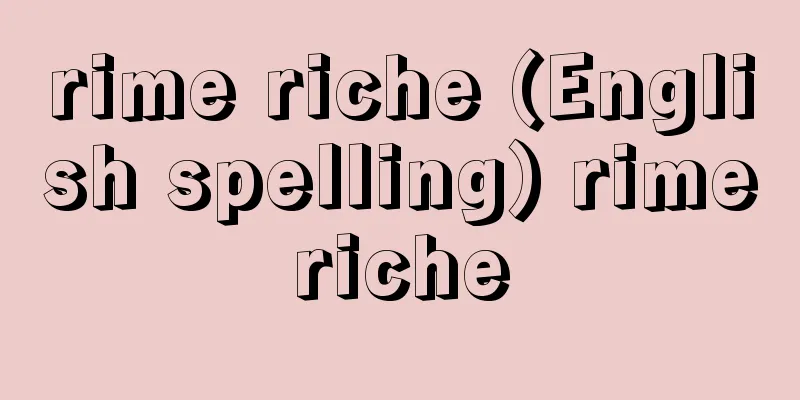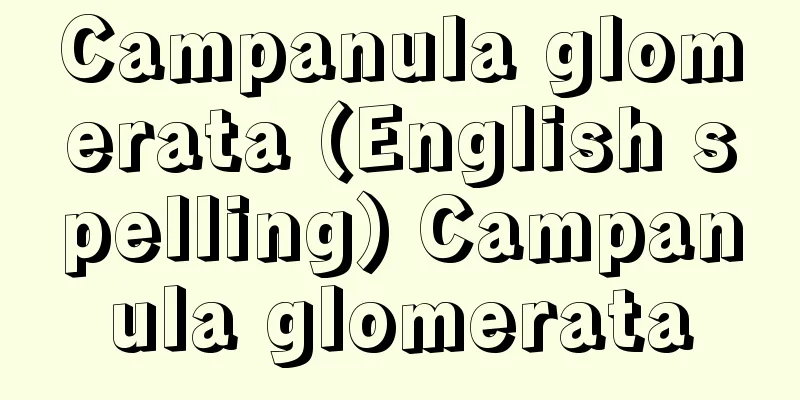Magnetic pole

|
Generally, this refers to the location where a magnet attracts iron most strongly. Magnetic materials can have residual magnetism, and those with particularly strong magnetism become magnets. When a magnetic needle is brought close to a rod-shaped magnet, they attract each other if pointed in one direction, and repel each other if pointed in the opposite direction. The tip of the magnet where the north pole of the magnetic needle attracts is called the south pole, and the tip where it repels is called the north pole. "Magnetization" can be thought of as a state in which magnetic moments in a tiny area are aligned from the south pole to the north pole. [Kano Naga] Earth's magnetic polesWhen examining the direction of the geomagnetic field on the Earth's surface, there is one place where it points vertically upwards and one place where it points vertically downwards, which are called the North Magnetic Pole (81.3°N, 110.8°W in 2000) and the South Magnetic Pole (64.7°S, 138.0°E in 2000). On the other hand, when looking at the Earth's magnetic field as a whole, the dipole-type magnetic field component is very large. Therefore, apart from these magnetic poles, a dipole in the center of the Earth that best approximates the Earth's magnetic field is calculated, and the two points where its axis intersects with the surface when extended are called the Geomagnetic North Pole and Geomagnetic South Pole (the poles' positions in 2005 were 79.7°N, 71.8°W and 79.7°S, 108.2°E). As is clear from the definition, the straight line connecting the two geomagnetic poles passes through the center of the Earth, but there is no such relationship between the North Magnetic Pole and the South Magnetic Pole. [Kano Naga] [References] | | | |Source: Shogakukan Encyclopedia Nipponica About Encyclopedia Nipponica Information | Legend |
|
一般に磁石がもっとも強く鉄を引きつける場所のこと。磁性体は残留磁化をもつことができ、とくに磁化の強いものは磁石になる。棒状の磁石に磁針を近づけると、一方の向きなら引きあい、反対の向きにすると反発しあう。磁針のN極が引きあう磁石の先をS極、反発しあう先をN極とする。「磁化」とはS極からN極へ向けて微小領域の磁気モーメントが並んだ状態と考えることができる。 [河野 長] 地球の磁極地球の表面での地磁気の方向を調べると、鉛直上向きになる所と鉛直下向きになる所が1か所ずつあり、それぞれ北磁極(2000年には北緯81.3度、西経110.8度)、南磁極(同、南緯64.7度、東経138.0度)とよばれる。一方、地球磁場を全体としてみると双極子型の磁場成分が非常に大きい。そこで、これらの磁極とは別に、地球磁場をもっともよく近似する地球中心にある双極子を計算で求め、その軸を延長したとき表面と交わる2点を地磁気北極および地磁気南極という(2005年の極の位置は北緯79.7度、西経71.8度と南緯79.7度、東経108.2度)。定義から明らかなように、二つの地磁気極を結ぶ直線は地球の中心を通るが、北磁極と南磁極の間にはそういう関係はない。 [河野 長] [参照項目] | | | |出典 小学館 日本大百科全書(ニッポニカ)日本大百科全書(ニッポニカ)について 情報 | 凡例 |
<<: Magnetic aftereffect - Jikiyokou (English spelling) magnetic aftereffect
>>: Private teachings collection - Shikyōruijū
Recommend
General average action - General average action
...General average is defined in detail in the Co...
Teaching - Kyogaku
Around 1935, in connection with the so-called stud...
Revolutionary War
A war between France and other European countries...
Wandervogel
Walking trip. Meaning "migratory bird" i...
Forest of Orleans - Orleans Forest
…Located on the Loire River, about 115 km south o...
Elasticity of Expectations - The Elasticity of Expectations
...This can be easily understood by considering, ...
Crow genus - Crow genus
...Also, the Siberian Starling S. sturninus and t...
Kitamukidani Primeval Forest
...The river originates near the junction of Mt. ...
Primary hyphae - Ficus
…In the latter case, the hyphae are always in a s...
Saburo Obusuma - Masaburo Obusuma
...Only one volume remains, with the latter half ...
Ibodango - Pacific spiny lumpsucker
This marine fish belongs to the order Perciformes...
Hoonko - Hoonko
This is a Buddhist service held on the anniversar...
Kimigahata - Kimigahata
A mountainous area in the southeastern part of Sh...
Sweet almond
…The kernel is inside the kernel, which is edible...
Nishikawa Koisaburo
Name of the head of the Nishikawa school of Japan...









